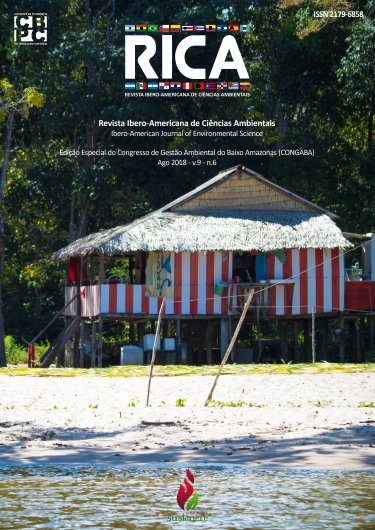The use of water in soybean production in a farm in the municipality of Santarém, Amazonia, Brazil
DOI:
https://doi.org/10.6008/CBPC2179-6858.2018.006.0027Keywords:
Water Footprint, Amazon, Soya production, Management of water resourcesAbstract
As an indicator related to water use, there is the water footprint (PH), which has been much discussed because it underscores the great importance of having proper management of water use. PH has the characterization of three types of basic water, which are blue, green and gray. The work aims to estimate the amount of water used in the soybean production chain in a farm located in the municipality of Santarém, western Pará (AM), and aims to produce scientific inputs that provide a comparison of data obtained through this study in the Amazon with information and averages disposed of soybean crop in Brazil. The methodology used was Water Footprint Network, based on water footprint precepts based on Chapagain et al. (2003). The results obtained in the study area were 779.30m3.ton-1 of green PH, 0.125m3.ton-1 of blue PH and 166.67m3.ton-1 of gray PH, with 946.09m³.ton-1 as the footprint value. total hydro. Comparing with the appropriate national literature, it is noticeable that the PH value obtained in this research is considerably lower than in other regions of the country, being possible to interpret through analyzes that, from the water point of view, it is more viable to produce soybeans in the Amazon than elsewhere in Brazil. A very important factor for this result refers to the constant precipitation regime that exists at a certain time of the year (crop season) in the Amazon region; This greatly reduces or reduces the use of irrigation in soy production in this biome. Because the aforementioned factor is not characteristic of other Brazilian regions, they need to irrigate their crops much more (blue PH), which greatly increases the value of total PH. This concludes the need for better management of water use in Brazilian productions aiming at decreasing environmental impacts. Moreover, it is hoped that this research will serve as input for these actions of improved management of water resources in soybean and other crops that make use of irrigation.
Downloads
Downloads
Published
Issue
Section
License
The CBPC - Companhia Brasileira de Produção Científica (Brazil CNPJ: 11.221.422/0001-03) the material rights of the published works. The rights relate to the publication of the work anywhere in the world, including rights to renewals, expansions and dissemination of the contribution, as well as other subsidiary rights. All electronically published works may subsequently be published in printed collections under the coordination of this company and / or its partners. The authors preserve the copyright, but are not allowed to publish the contribution in another medium, printed or digital, in Portuguese or in translation.









